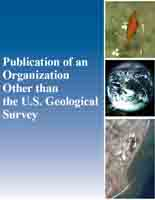Pocket beaches are short, headland-bound coastal landforms that may exhibit shoreline rotation in response to time-varying wave conditions. Here we examine the presence, location and style of pocket beach rotation along the 1700 km coast of California using a comprehensive 22-year satellite-derived shoreline dataset. These analyses identify 23 pocket beaches that exhibit annual cycles of rotation, and these beaches have two general types. In southern California, pocket beaches rotate clockwise, or towards the south, in the winter season (‘winter southward’ transport of sand). These beaches have symmetric rotation patterns and strong seasonality in wave direction (winter west swell and summer south swell), which is indicative of rotation from seasonal oscillations in longshore sediment transport. In northern California, pocket beaches rotate counterclockwise, or towards the north, in the winter (‘winter northward’ transport of sand), and they are characterized by strong asymmetry (winter beach is overall narrower than the summer beach) and strong seasonality in wave power. Rotation of these northern California beaches is related to both cross-shore and longshore sediment transport, caused by large west-to-northwest swell of the winter and smaller northwest wind waves of the summer. We acknowledge that many more rotating pocket beaches likely exist in California owing to the undersampling of the smallest beaches in the source data. In the end, we conclude that seasonally rotating pocket beaches are a fundamental coastal landform type of the California coast, owing to its wave seasonality and rocky and cliff-backed morphology.


